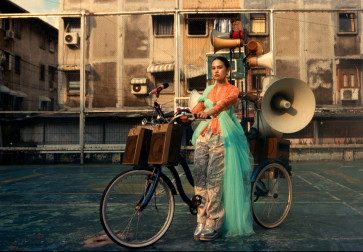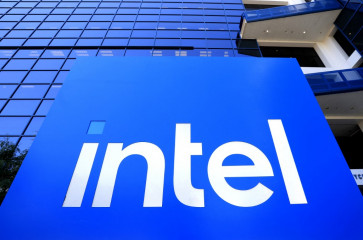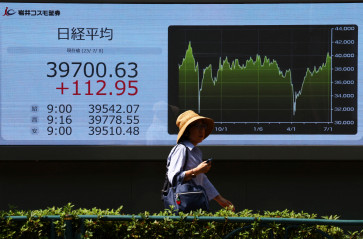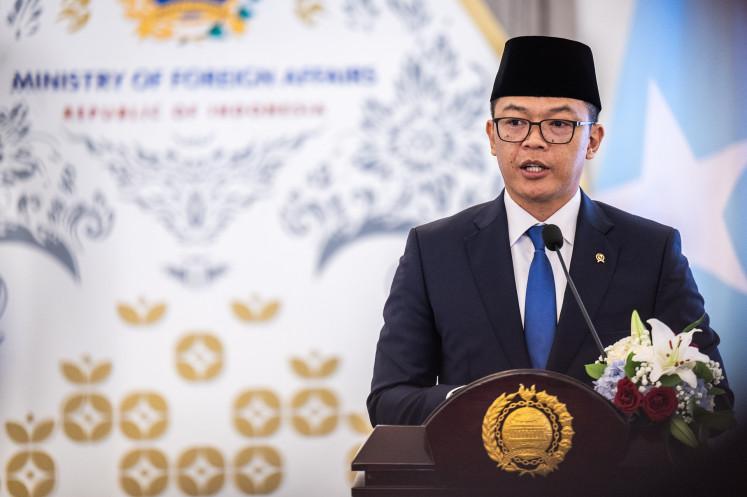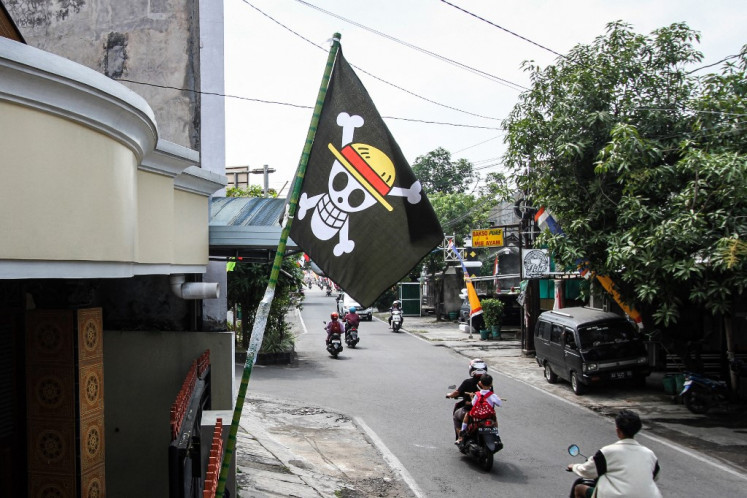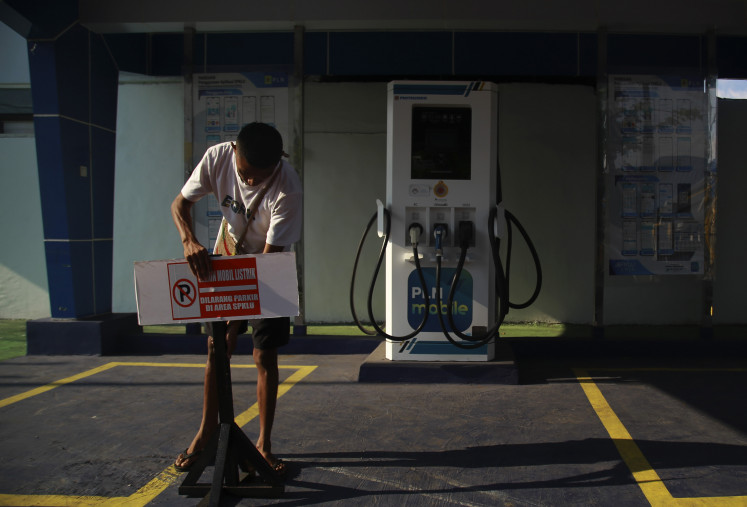Popular Reads
Top Results
Can't find what you're looking for?
View all search resultsPopular Reads
Top Results
Can't find what you're looking for?
View all search resultsSnapshots: Indonesia, Russia exhibit 70 years of friendship
From pines to palms: Russian artist and curator Vladimir Anisimov (center) gives a press tour before the opening of the Necklace of Equator art exhibition, which commemorates 70 years of Indonesian-Russian diplomatic relations, at the National Gallery of Indonesia in Jakarta on Monday
Change text size
Gift Premium Articles
to Anyone
F
rom pines to palms: Russian artist and curator Vladimir Anisimov (center) gives a press tour before the opening of the Necklace of Equator art exhibition, which commemorates 70 years of Indonesian-Russian diplomatic relations, at the National Gallery of Indonesia in Jakarta on Monday. (JP/Apriza Pinandita )
Paintings and historical archives bearing witness to Indonesia and Russia’s close friendship are on display for two weeks as an exhibition in Jakarta has kicked off to celebrate 70 years of diplomatic relations between the partners.
Eighty-five paintings by 10 Russian artists and some rare photographs taken from Indonesia’s National Archives (Arsip Nasional) are exhibited at the National Gallery of Indonesia from Feb. 3 to 17.
The Necklace of the Equator, jointly hosted by the Russian Embassy in Jakarta and the Foreign Ministry, showcases Indonesian culture through the eyes of the artists, most of whom lived in or visited the archipelago some 20 years ago.
Russian artist Vladimir Anisimov, the curator of the exhibition, said the featured artists all had a special interest in Southeast Asia, leading to their selection to commemorate Russia’s diplomatic ties with countries of the region.
"The paintings have also been exhibited in Russia and have attracted many viewers [there]," Anisimov said while giving a press tour on Monday evening.
During the opening ceremony for the exhibition, Russian Ambassador to Indonesia Lyudmila Vorobieva waxed poetic about the evolution of seven decades of Russian-Indonesian relations.
Mutual trust and a sincere friendship had brought the two nations together and became the basis for Russo-Indonesian bilateral cooperation and interactions on the regional and global stage, the envoy said.
“Excellent political dialogue has been established between our presidents [and] parliamentary interaction is expanding. Trade and investment cooperation [is] showing a good dynamic. Humanitarian, social and cultural ties are strengthening,” Vorobieva said in her speech.
“Let us join efforts to further promote Russian-Indonesian brotherhood.”
Although Russian maritime expeditions to the archipelago date back to the 19th century, Jakarta’s official relationship with Moscow began in the final days of the Indonesian revolution, when the Soviet Union was notified on Dec. 24, 1949, that the Netherlands had acknowledged the sovereignty of Indonesia, according to official accounts.
Then-foreign minister of the Soviet Union A.Y. Vyshinsky went on to send a telegram to Mohammad Hatta, the nation’s top diplomat at the time, to acknowledge “the United Republic of Indonesia as an independent and sovereign state and establish diplomatic relations”. The official announcement was later published by Russia’s TASS news agency on Jan. 26, 1950.
Since then, Indonesian-Russian ties have ebbed and flowed, reaching a pinnacle during the reign of president Sukarno, only to decline once former army general Soeharto succeeded him. The relationship has slowly picked up again up until today.
Visitors to the exhibition can now trace the contours of this historical journey in diplomatic relations through the many photographs on display on the walls of the gallery, said Teuku Faizasyah, the Foreign Ministry’s acting director general for American and European affairs.
Even the choice of venue, the National Gallery of Indonesia, had a distinct purpose, the senior ministry official said. “Former president Sukarno decided to build this gallery after his first visit to Russia in 1956, which included a visit to an art gallery there,” Faizasyah told reporters.
This year’s anniversary celebrations will also mark a new phase in the bilateral relationship, when both sides upgrade the status of their formal cooperation into a strategic partnership.
“Such a partnership will provide us with a clear task to further strengthen relations based on mutual trust and respect,” Faizasyah said.
In an op-ed published by Kompas on Sunday, Russian Foreign Minister Sergey Lavrov said that “Russia and its Indonesian friends continue to work proactively” on ensuring the upgrade in relations is consummated.
“I am confident that the traditions of friendship and mutual understanding, traditions tested by long decades, create the necessary prerequisites for the further expansion and intensification of cooperation,” the minister said.
Back at the exhibition, Anisimov joked that, as an artist, he had found greater understanding of Indonesian history than historians themselves, as artists could not create in a vacuum of history.
He promised that the exhibition, now in its fourth iteration in Jakarta, would not mark the end of the Russian art community’s infatuation with Indonesia.
“There are more than 17,000 islands. We [might] need more than one lifetime to [explore] this country,” said the head of the Russian Bureau of Creative Expeditions. (tjs)


